170
ELECTRICITY A
D ELECTRO
ICS (866)
The syllabus is not intended to be used as a teaching
syllabus, or to suggest teaching order. It is expected
that teachers will wish to develop the subject in their
own way.
In the examination, questions will be aimed more at
testing the candidates' understanding of fundamental
principles, and the application of these principles to
problem situations, than to their ability to remember a
large number of facts. Some questions will include
simple calculations.
An experimental approach to the subject is envisaged
and it is assumed that candidates will spend adequate
time on individual experimental work. Questions may
be set requiring descriptions of experimental
procedures. Candidates should also know how to
exhibit the results of experiments graphically and how
to make deductions from graphs, e.g. from intercepts
and gradient in the case of straight-line graphs,
deductions by interpolation.
Candidates will be expected to be conversant with SI
units.
CLASS XI
There will be one paper of three hours duration of
100 marks.
The paper will be divided into two parts.
Part I: will consist of short answer questions.
This part will be compulsory.
Part II: will consist of eight questions. Candidates
will be required to answer five questions.
1. Introduction to electricity. Structure of atoms; the
model atom, nucleus, electrons. Unit of charge;
coulomb. Potential difference and electromotive
force. Production of electricity by friction,
magnetism and chemical action.
2. Electric circuit. Electric current I = Qt. Ampere
as rate of flow of charge. Ohm's law as applied to
a single resistance (V/I=R) and to a whole circuit
(E/I= total R).
3. Equivalence. Cell groupings. Resistances in series
and parallel. Resistivity; R = Pl/A. Calculation of
resistance of wire. Temperature coefficient of
resistance. Ammeter shunts; voltmeter multipliers;
series ohmmeter.
4. Work, power and energy. Work and energy. The
joule. E =V/t (QV). Unit of power and energy; the
watt, the kilowatt, the watt-hour and kilowatthour.
Use of wattmeter. Calculation of electrical
energy and power. Local tariff system.
5. Heating effect of an electric current. Application
of heating effect, e.g. heating appliances, filament
lamps, electric welding, electric carbon arc, and
use of fuses.
6. Chemical effect of an electric current.
Electrolytes and non-electrolytes. Elementary
phenomena of electrolysis, including the
electrolysis of acidified water, and of copper (II)
sulphate solution using copper or platinum
electrodes. The factors affecting the mass of
substance liberated in electrolysis and the
measurement of current by voltameter
(coulometer). Primary cells; Leclanche cell;
polarization; local action. Accumulators;
construction and characteristics of lead-acid cell;
techniques of testing and charging batteries; care
and maintenance.
7. Electromagnetism. Simple phenomenon of
magnetism. Ferromagnetic properties of iron and
steel. Magnetic effect of an electric current. The
magnetic field associated with a current flowing
in a straight wire, a circular coil, and a solenoid.
Force on a current-carrying conductor in a
magnetic field; the right-hand and corkscrew
rules. Magnetic flux density. Permeability.
8. Electromagnetic induction. Phenomenon of
electromagnetic induction. Faraday's law; Lenz's
law. Induced e.m.f.; a straight conductor cutting
flux; E = - df/dt = Blv. Self-inductance;
E = - Ldi/dr. Mutual inductance; the induction
coil.
9. Elementary electrostatics. Electric field; E = V/d.
Capacitance and the factors affecting capacitance.
Electric flux density; D = Q/A. Permittivity;
m = D/E. Energy of charged capacitors in series
and in parallel.
171
10. Alternating current. Generation of an a.c. with a
single loop coil. Sinusoidal wave form. Peak
values; r.m.s. values (Only ratios will be
expected.) Simple a.c. circuits.
11. Transformer. Principle of the single-phase
transformer, and iron loss (hysteresis and eddy
current).
12. Lighting. Common types of lamps; candela,
lumen, lux, lux meter (light-meter). Illumination
and photometry. Gas-filled lamps and fluorescent
lamp circuits; preheat, instant and rapid starts.
CLASS XII
There will be one paper of three hours duration of
100 marks
The paper will be divided into two parts.
Part I: will consist of short answer questions.
This part will be compulsory.
Part II: will consist of eight questions. Candidates
will be required to answer five questions.
1. Distribution of electric power. Idea of a simple
distribution system. Mention of the local power
system should be made.
2. The D.C. generator and motor. Use of split-ring
commutators; constructional features. Shunt
series and compound field connections and their
characteristics. Starting of D.C. motors. Ideas on
back e.m.f.
3. The A.C. motor. Ideas on A.C. motors (single
phase only). The rotating field. Methods of
shunting: capacitance start, split phase start.
Single-phase induction motor types.
4. Wires, cables and electrical wiring. Construction
of various types in domestic and industrial use.
(Solid and stranded cables – how insulated and
protected. Flexes). Selection of cable sizes,
voltage drop and simple calculation on currentcarrying
capacity. (Linking of size of cables and
flexes with maximum current flow particularly in
relation to the circuits below. Regulation B 23
(voltage drop). Brief description of the wiring
systems. Simple circuitry. (Separation of lighting
and power circuits. Layout of lighting circuits.
Switch in phase line. Dual switching of lamps.
Layout of power circuits - ring and spur
types - limitations). Introduction to rules and
regulations, both local and that of I.E.E.
(Sequence of equipment). Effects of overloading.
Protection of circuits and individuals by (a) fuses
and trips, (b) earthing of metal, (c) mechanical
protection of cables. Regulations for bathrooms.
Commonsense appreciation of dangerous
practices. (Simple testing).
5. Electrical accessories. Structure and uses
of various types of switches, power outlets,
lamp holders, ceiling roses and junction
boxes. [Familiarity with these is expected
(but no questions will be set needing detailed
knowledge of structure). Where and how they are
used].
6. Introduction to electronics. Concept of electron
flow. Common components employed in
electronic circuits; resistors, capacitors and
inductors; their structure, types and uses.
7. Diodes. Thermionic diode; semiconductor diode.
Structure of vacuum diode and semiconductor
diode.
8. Power supply for electronic apparatus. Mains
transformer. The diode; half wave, full wave and
bridge rectifiers, voltage doubler. Filters; RC
filters, chokes, bleeder resistance and its
functions.
9. Vacuum triode. Structure of the vacuum triode
valve. The control grid. Triode valve
characteristics. Triode parameters; anode
resistance, mutual conductance and amplification
factors; relationship between the above
parameters. Triode as a voltage amplifier. Bias
voltage, cathode resistor and cathode bypass
capacitor.
10. Transistor. The junction transistor: PNP and NPN
types. Introduction to various methods of
construction; their characteristics including
handling procedures and precautions.
11. Transistor amplifier. Introduction to the commonbase,
common emitter and common collector
amplifiers. Comparison of the voltage, current
and power gains and input and output resistances
172
(elementary approach only). Phase relationship.
Bias stabilization.
12. The amplifier. A typical amplifier voltage and
power amplification. Matching of the power
output stage to a speaker.
13. Apparatus for reproducing and recording sounds.
Range of hearing, recording and reproducing.
Characteristics of microphones; carbon, crystal,
moving-coil and ribbon types. The common types
of gramophone pick-ups. The earphone, crystal
and magnetic tapes. The moving-coil
loudspeakers; permanent magnet. Electrostatic
speaker.
14. Common types of electronic measuring
instruments. Valve voltmeters, transistorised
voltmeter, signal generator, oscilloscope, use and
care of the above instruments.
skip to main |
skip to sidebar
Get the latest free guess papers of class 8th, 9th, 10th, FA, FSC, BA, BSC, MA, MSC, MCOM, BCOM, MIT, PGD-It, and Other Classes of Punjab University and Others Colleges and Boards of Pakistan India and Bangladesh
MORE GUESSPAPERS and NOTES
197 MUSIC
221 BIOTECHOLOGY (878)
A level Latin
A-level ACCOUNTING 0452/01 Paper 1 Multiple Choice May/June 2009
A-level FIRST LANGUAGE CHINESE 0509/02
A-level Pakistan Studies 2006
A-level PHYSICS Paper 3 Extended 0625/03
BA Economics
BCOM PART 2 ADVANCED ACOUNTING
BCOM PART 2 BCRW
BCOM PART 2 BUSINESS LAW
BCOM PART-2 AUIDITING
BCOM-II Economics
BCOM-PART 2 BUSINESS TAXTATION
BCOM-PART 2 COST ACCOUNTING
BIOTECHOLOGY (878)
CA Foundation Course GDP n GNP
CA Free Markete Economy
CA important questions
CA Notes Scarcity and Choice
CA Notes UNIT 3.1 NATIONAL INCOME
CA Notes UNIT 3.2 GOVERNMENT AND THE ECONOMY
CA Notes UNIT 3.3 FISCAL POLICY
CA Notes UNIT 3.4 MONEY MONETARY POLICY
CA Notes UNIT 3.5 CAPITAL
CA Notes UNIT 3.6 INTERNATIONAL TRADE
CA Solved Assignments
CBSE Science - Chap 1 - Crop Production And Management - Page 13 - Q 1
CBSE Syllabus Class 9 - English (Communicative )
CBSE Syllabus of English Language And Literature for Class 9th For March 2009 Examination ENGLISH - LANGUAGE AND LITERATURE (Code No. 184)
CBSE Syllabus of Mathematics for Class 9th For March 2009 Examination Course Structure Class IX | Mathematics
CBSE Syllabus of Science And Technology for Class 9th For March 2009 Examination COURSE STRUCTURE CLASS IX | SCIENCE (THEORY)
CBSE Syllabus of Social Science for Class 9th For March 2009 Examination COURSE STRUCTURE Social Science | CLASS IX
Class X BIOLOGY GUESS QUESTIONS FOR SSC
Class X SOCIAL PAPER 1 GUESS QUESTIONS - - - - -
Class X Social Studies Question Paper
COMPUTER SCIECE (868)
COST AND REVENUE
Economics Solved Assignments
ELECTRICITY A D ELECTRO ICS (866)
Empirical and Molecular Formulas
EVIROMETAL SCIECE (877)
FASHIO DESIGIG (865)
GEOMETRICAL AD MECHAICAL DRAWIG (869)
Guess Paper – 2010 Class – X Subject –Chemistry (Equations)
Guess Paper – 2010 Class – X Subject – English Paper - I
IMPORTANT QUESTION CA
INDIAN CERTIFICATE OF SECONDARY EDUCATION EXAMINATION
INDIAN SCHOOL CERTIFICATE EXAMINATION
ISC MODEL EXAMII\ATION 2OTO CLASS XII MATHEMATICS
LATIN 0480/02 Paper 2 Literature May/June 2009
LITERATURE IN ENGLISH 2010/01
Managerial Economics Notes UNIT 3.1 THE SCOPE OF MANAGERIAL ECONOMICS
Managerial Economics Notes UNIT 3.2 RISK ANALYSIS RISK AND UNCERTAINTY IN MANAGERIAL DECISION MAKING
MARCH 2010
MARK SCHEME for the May/June 2008 question paper 2059 PAKISTAN STUDIES
MCOM Notes UNIT 1 DEFINITION AND BASIC CONCEPTS
MCOM Notes UNIT 1.5 PRODUCER BEHAVIOUR
MCOM Notes UNIT 1.6 THEORY OF THE FIRM
MCOM Notes UNIT 2.1 NATIONAL INCOME
MCOM Notes UNIT 2.2 INFLATION AND BUSINESS CYCLE
MCOM Notes UNIT 2.3 BALANCE OF PAYMENT AND EXCHANGE RATES
MCOM Notes UNIT 2.4 MONEY AND BANKING
Model Question Paper B.A. (Hons.) English Entrance Test
MS 01 Management Functions and Behaviour
MS 02 Management of Human Resources
MS 06 Marketing For Managers
MS-05 Management of Machines and Materials
O-level ACCOUNTING 0452/01 Paper 1 Multiple Choice May/June 2009
Pak Studies Ch 8 Chapter Name: Industry of Pakistan.
Paper BA Economics B
PHYSICAL EDUCATIO (875)

